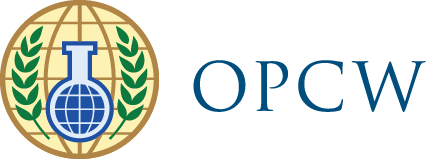The International Chemical Demilitarisation Conference 2002 (CWD 2002), hosted by Dstl, ICF Consulting and SAIC, is being held from 21 to 23 May 2002 in The Hague, The Netherlands. The CWD 2002 programme highlights the status of current programmes, facility demilitarisation, public health protection, the role of NGOs, and the environmental issues related to chemical weapons disposal plans.
The Acting Director-General of the Technical Secretariat of the Organisation for the Prohibition of Chemical Weapons (OPCW), Mr John Gee, spoke of the achievements and the challenges facing the Organisation in his keynote address to CWD 2002.
Five years after the commencement of operations at the OPCW, the destruction of chemical weapons continues: four possessor states have declared a total of nearly 70 thousand metric tonnes of chemical warfare agents. Based upon current plans, this huge global arsenal will be destroyed at a total of 42 existing or future chemical weapons destruction facilities (CWDFs).
In the first five years of operation, OPCW inspectors have carried out nearly 1200 inspections at military and industrial facilities, at more than 500 sites in 51 States Parties. Mr Gee noted that “We have accumulated considerable expertise and are well qualified to offer solutions, which would ensure that verification remains both effective and cost-effective.”
As of 30 April 2002, the four possessor States Parties had destroyed over 6,880 metric tonnes of chemical weapons agents, or 9.8% of the declared total. At the same time, more than 2 million munitions and containers, or nearly 24% of the declared total, have also been verified as destroyed by the OPCW’s inspectors.
Since inspections began in June 1997, two thirds of the OPCW’s inspection resources have been devoted to verifying chemical weapons destruction. Next year, the inspection workload at continually operating CWDFs will increase fivefold, when four new CWDFs, Gorny in the Russian Federation, Anniston in the United States later this year and Umatilla and Aberdeen in the US early next year, come on line.
The OPCW is therefore currently engaged with the chemical weapons possessor States Parties in exploring the possibility of cost-saving verification measures, which may allow the Secretariat to continue to meet its verification responsibilities within the currently available resources, and without compromising the effectiveness of the verification regime. These additional measures, if implemented on time, would reduce the number of inspectors required at facilities for continuous monitoring of the destruction process.
Mr Gee concluded, “We have always placed top priority on the need to verify chemical weapons destruction. Support the OPCW. It is working. There is no room for complacency. It can, and must, do better in the future. And with your help and support, it will.”
39/2002
